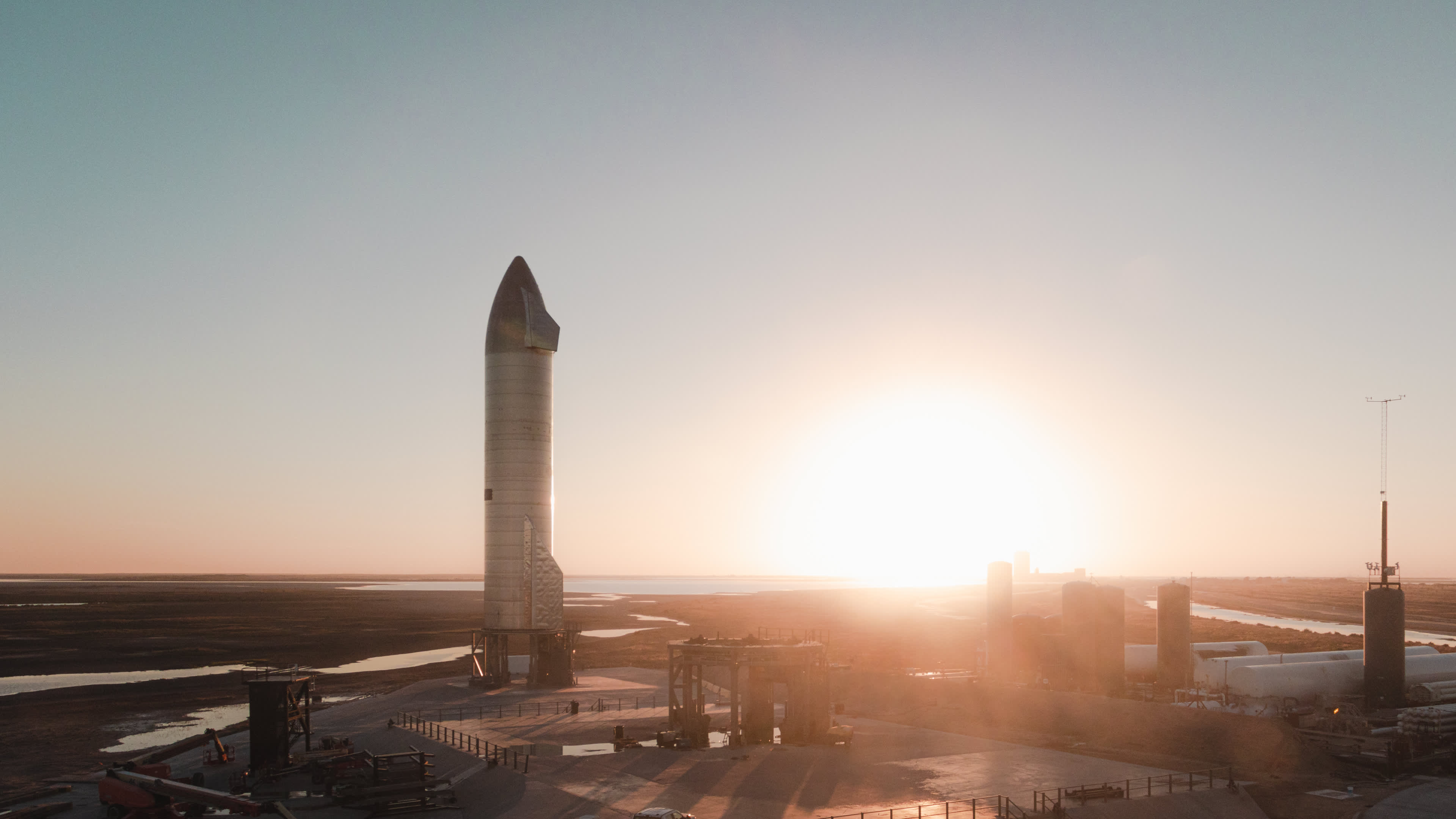
[This livestream has ended. A replay is available above.]
UPDATE: The latest SpaceX prototype was successfully launched, but, like the previous test flight, the rocket exploded on impact during a landing attempt. Read more here.
SpaceX is preparing to launch on Tuesday the latest prototype of its new generation Starship rocket, in the second high-altitude flight test of the system.
The Starship Serial Number 9, or SN9, prototype will fly up to 10 kilometers or about 32,800 meters. The flight will be similar to that of SpaceX in December, when it launched the SN8 prototype on the tallest and longest flight to date. Flight SN8 met several development objectives, including testing the aerodynamics of the system and completing a flip to land, but the prototype exploded on impact as the rocket failed to slow down enough.
The SN9 is made of stainless steel, with prototypes representing the early versions of the rocket that CEO Elon Musk unveiled last year. The company develops Starship in order to launch cargo and up to 100 people at a time in missions to the Moon and Mars.
The prototype of the Starship SN9 rocket is on the company’s launcher in Boca Chica, Texas.
SpaceX
Like the SN8, the purpose of the SN9 flight is not necessarily to reach maximum altitude, but rather to test several key parts of the Starship system. The Starship prototype is about 150 feet high or about the size of a 15-story building and is powered by three Raptor rocket engines. SpaceX will start all three take-off engines and then stop them one by one in order as they approach the peak of the intended flight altitude.
The SN9 launch attempt was delayed for about a week as SpaceX worked to get permission from the Federal Aviation Administration to launch. Flight SN8 violated the company’s Starship license, The Verge first reported, and the FAA later confirmed that the federal aerospace regulator rejected a SpaceX application for a waiver to exceed the maximum public risk allowed by federal safety regulations. said the FAA in a statement.
SpaceX was forced to investigate its non-compliance, forcing Musk’s company to suspend launches until the investigation was completed and the FAA signed.
“The FAA established late Monday (February 1) that SpaceX complies with all federal safety and related regulations and is authorized to conduct Starship SN9 flight operations in accordance with its launch license,” the FAA said.
The key tests for SN9 flight include stopping the engines in succession, transferring fuel from the main tanks to the head, thanks, twisting for the “belly” re-entry maneuver and controlling its descent through the air with the four flaps on the rocket.
SpaceX pointed out that the “dynamic development testing program” may delay the launch attempt, as has been the case with previous ship launches.
Subscribe to CNBC PRO for exclusive statistics and analysis, and live scheduling on weekdays around the world.